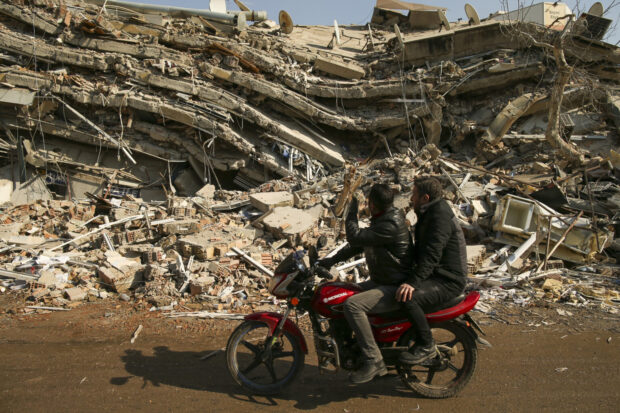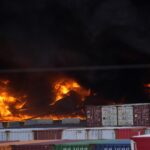Economic losses for the Feb. 6, 2023, earthquakes in Turkey will likely exceed $20 billion, while insured losses will likely be more than $1 billion, according to Extreme Event Solutions at Verisk (formerly AIR Worldwide).
These estimates are based on impacts of both earthquakes (of more than 7 magnitude), which occurred that day. Verisk indicated the initial shock is the driver of most of the insured losses.
“These devastating earthquakes caused not only extensive physical damage but also a tragic loss of life in Turkey and Syria,” said Bill Churney, president of Extreme Event Solutions, Verisk. (Editor’s note: Deaths across Turkey and Syria have now surpassed 37,000 people.)
“The sizable difference between insured and economic losses—the protection gap—represents the cost of catastrophes to society, much of which is ultimately borne by governments. Increasing insurance penetration can ease much of the burden,” commented Churney. “There are solutions available that can enhance global resilience efforts, including emergency management, hazard mitigation, public disaster financing, risk pooling, and other government-led risk- and loss-mitigation initiatives.”
Turkey’s Earthquakes
The first earthquake on Feb. 6, 2023, at magnitude 7.8, resulted from strike-slip faulting at shallow depth. The location of the earthquake places it within the vicinity of a triple-junction between the Anatolia, Africa and Arabian tectonic plates, said Verisk. According to the USGS’s finite fault model, the slip occurred as far north as the cities of Malatya and Adiyaman in Turkey and as far south as the Turkey/Syria border. Nine hours after the first earthquake, a second earthquake of magnitude 7.5 occurred 100 km to the north on a separate but connecting fault.
Turkey has a high rate of earthquake occurrence. Since 1900, approximately 12 earthquakes of magnitude 5.0 and greater and one event of magnitude 6.0 and greater have occurred here each year. Notable historical events in Turkey include the 1939 magnitude 7.9 İzmit earthquake, the 1999 magnitude 7.5 İzmit earthquake and the 1999 magnitude 7.2 Düzce earthquake.
Turkey has a long history of building codes and regulations that have been developed to ensure the safety and performance of buildings against earthquakes, Verisk said, adding that current codes reflect the latest advancements in building technology and seismic design practices almost in parallel with changes in the U.S. seismic code.
Despite these efforts, the seismic performance of buildings in Turkey during earthquakes has been mixed. Buildings complied with codes have performed relatively well, while many others have experienced significant damage and collapse during earthquakes.
Although many advancements have been made in the past 20 years, damage during the 1999 İzmit earthquake is similar to the recent quake: widespread pancake-type collapse for both old and new buildings, particularly for middle- and high-rise buildings.
The reason is this large magnitude earthquake generated strong shaking in 1-2 seconds and posted strong demand to mid- and high-rise buildings. In areas like the city of Hatay, which is close to the rupturing fault, the shaking demand was so severe and beyond the design of buildings, Verisk continued.
“However, in many cases, one or several buildings collapsed but neighboring buildings survived, such as the one observed at Sanliurfa about 50 miles away from the fault.”
Verisk’s modeled insured loss estimates do include:
- Damage from ground shaking-induced insured physical damage to onshore property (residential, commercial/industrial, mutual), both structures and their contents
- Loss of use coverages such as business interruption
Verisk’s modeled insured loss estimates do not include:
- Losses due to fire-following, liquefaction or sprinkler leakage
- Loss adjustment expenses
- Losses to uninsured properties
- Losses to infrastructure
- Losses from extra-contractual obligations
- Losses from hazardous waste cleanup, vandalism or civil commotion, whether directly or indirectly caused by the event
- Losses outside of the model domain, including those in Syria
- Losses to civil engineering (railway) risks, marine cargo and marine hull risks, aviation risks
- Risks, transit warehouse risks, movable all risk, and personal accident risks
- Other non-modeled losses
Source: Verisk
Photo: People view collapsed building in Kahramanmaras, southern Turkey, Sunday, Feb. 12, 2023. (AP Photo/Emrah Gurel)





















 Artificial Intelligence Is Rewriting the Rules for Commercial Lines
Artificial Intelligence Is Rewriting the Rules for Commercial Lines  Breaking: Andersen to Replace Zaffino as CEO of AIG on June 1
Breaking: Andersen to Replace Zaffino as CEO of AIG on June 1  How Insurers Can Avoid Post-Merger Technology Failure
How Insurers Can Avoid Post-Merger Technology Failure  Slideshow: Carrier Management’s 2025 Top Editor’s Picks (Unlocked)
Slideshow: Carrier Management’s 2025 Top Editor’s Picks (Unlocked) 





